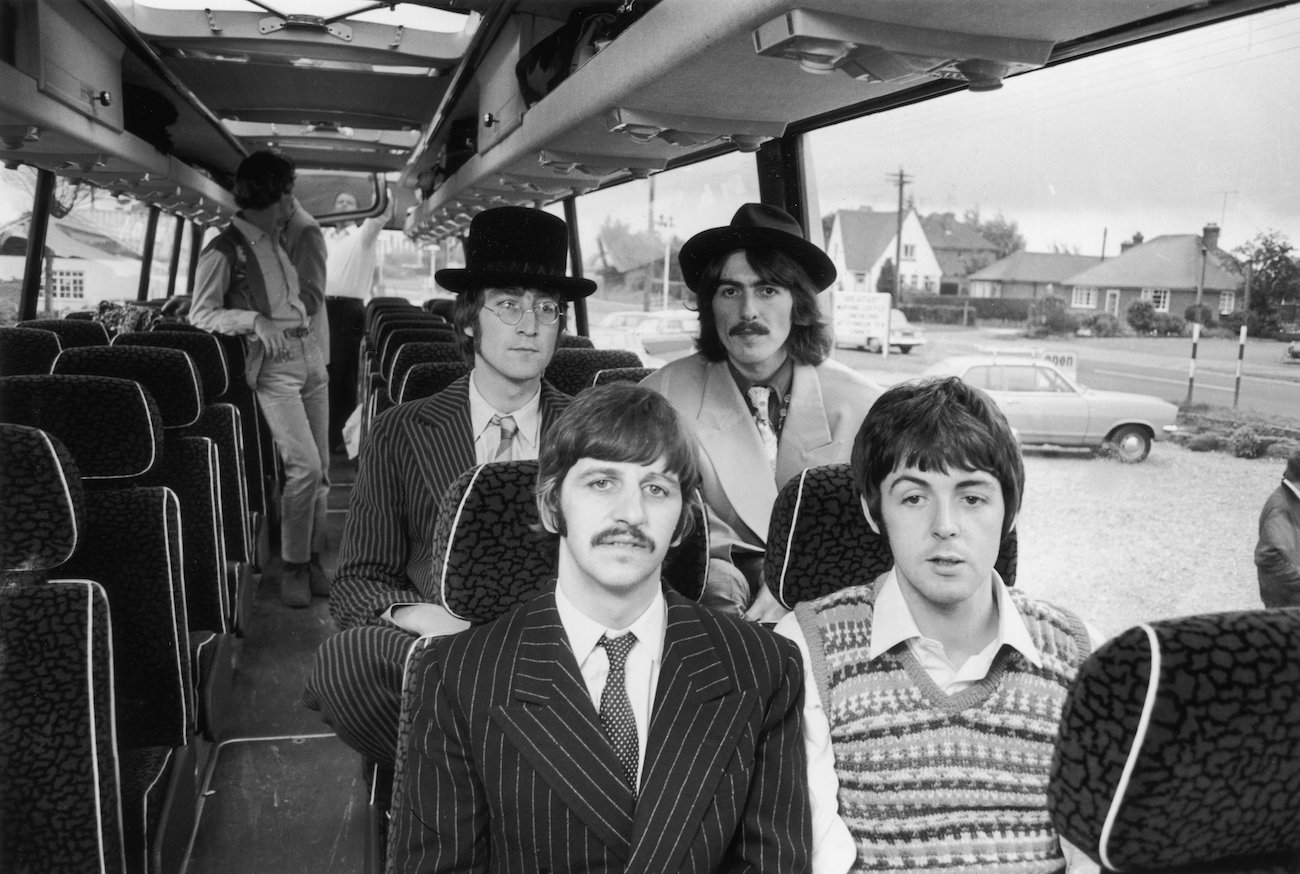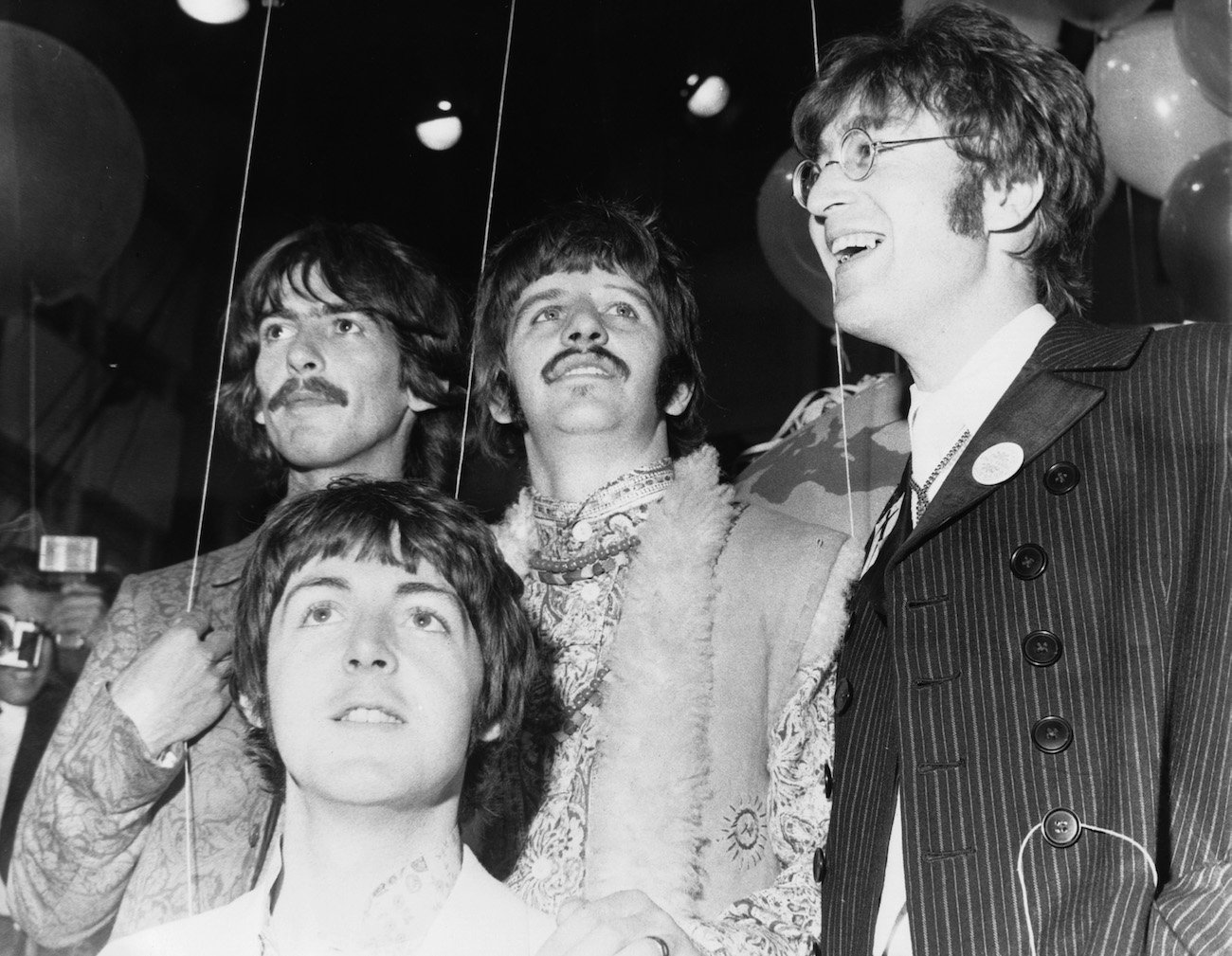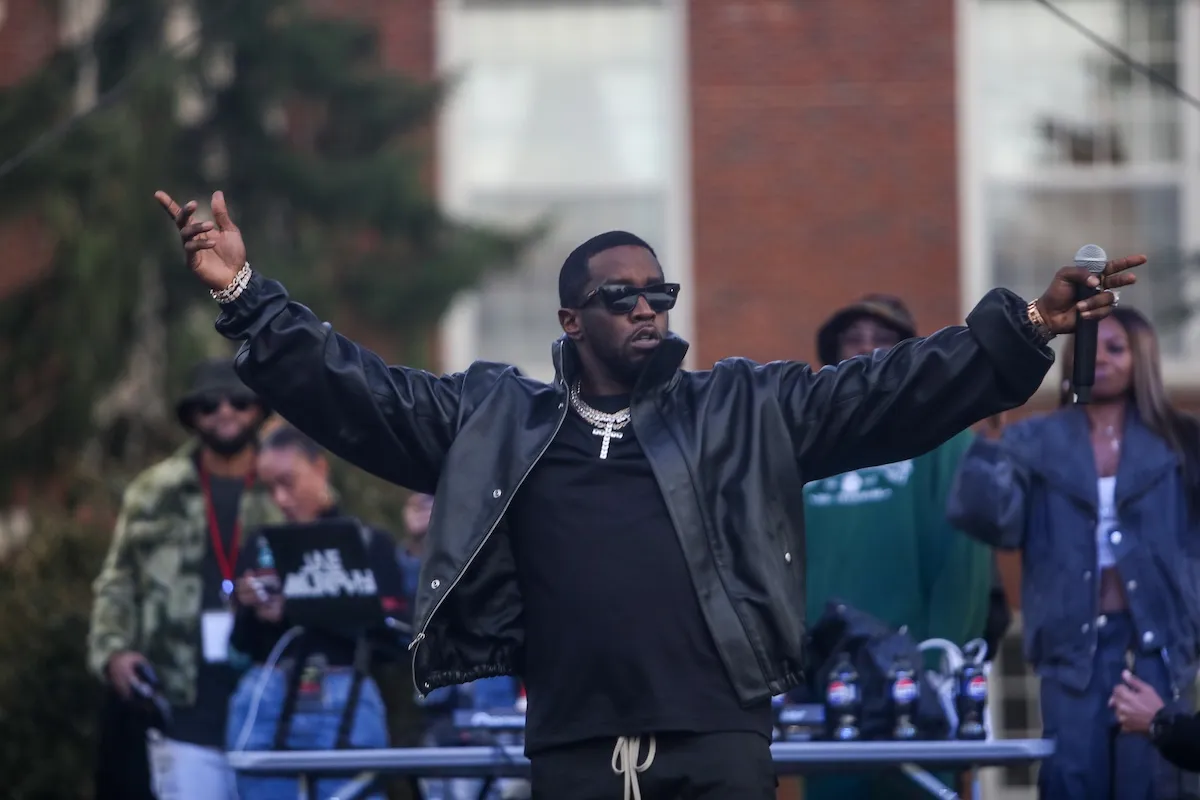
George Harrison on Why The Beatles Had Alter-Egos on ‘Sgt. Pepper’s Lonely Hearts Club Band’
Initially, George Harrison wasn’t impressed with The Beatles‘ idea to adopt alter-egos for their concept album, Sgt. Pepper’s Lonely Hearts Club Band.
He might not have wanted to be Beatle George anymore, but that didn’t mean he wanted to pretend to be someone else. Especially since he’d just begun to discover who he was during a recent trip to India in 1966.
Later, though, George explained why The Beatles had alter-egos on Sgt. Pepper, and it was more spiritual than he first thought.

George Harrison wasn’t too impressed with The Beatles adopting alter-egos for ‘Sgt. Pepper’
In Here Comes The Sun: The Spiritual And Musical Journey Of George Harrison, Joshua M. Greene wrote that George felt awkward being back in London after returning from his six-week trip to India.
“He didn’t want to be a fab Beatle again,” Greene wrote. “The band was his job, and as a responsible member he would continue to play lead guitar and sing harmony, but meditation was revealing to him an inner person with creative energies and original ideas straining to be expressed.”
George was willing to keep the peace and go on being a valuable member of the band, but he wasn’t impressed with the idea Paul McCartney came up with for their next album.
“George wanted to know who he was and who God was, and anything unrelated, however innovative, failed to hold his interest,” Greene continued. “Paul had come up with an innovative idea for their current album. The Beatles would pretend to be someone else, a make-believe group called Sergeant Pepper’s Lonely Hearts Club Band, and every time one of the Beatles sang, he would pretend to be someone in the made-up band.
“The idea left George cold and bored. They had been working on the album since November, and there was still no end in sight.”
George said The Beatles adopted alter-egos to identify with the people more
In 1967, George told Melody Maker (per George Harrison on George Harrison: Interviews and Encounters) why The Beatles had alter-egos on Sgt. Pepper. He’d found a spiritual connection to the idea he once thought was boring. It was all about identifying with the people.
“I feel this is something we’ve been trying to do all the time,” George explained. “Keep that identification with people. It gets harder and harder the more famous you get. People see you, they put you up on that pedestal and they really believe you’re different from them.
“With ‘Sgt. Pepper’ we’ve always tried to keep this identification and tried to do things for those people, to please those people, because in actual fact, they’re us, too, really. It’s no good us doing it all for ourselves, it’s for them. With ‘Pepper’ it’s just that anybody who feels, anybody who wants to be in Pepper’s Band is in it.
“Anybody who feels any identification. And this all gets back again to God. But at the same time we’re all responsible in a way because a lot of people are following us, we’re influencing a lot of people, so really, it’s to influence them in the right way.”
George added images of revered gurus to the album cover as clues to the spiritual aspect of him
Even though George couldn’t be back in India, he still put aspects of the culture into Sgt. Pepper, including its album cover. George added images of revered gurus as clues to the spiritual aspect of him.
“To photos of Albert Einstein, Marilyn Monroe, Bob Dylan, Marlon Brando, Laurel and Hardy, and other twentieth-century icons, he added Yogananda, Yogananda’s grand guru Lahiri Mahasaya, and Mahasaya’s guru Sri Mahavatara Babaji,” Greene added. “The photos, he would explain in later years, were ‘clues to the spiritual aspect of me,’ but such moments merely made bearable a job he no longer cared to do.”
George might’ve not liked working on Sgt. Pepper, but at least he was able to add aspects of himself that made him feel better.


